Neurochemistry
Neurochemistry is the foundation of how your mind and body connect — shaping how you feel, think, and act every day.
Your brain chemistry is not fixed. Every day, the choices you make — how you sleep, eat, move, think, and connect with others — send powerful signals that shape your neurochemistry.
These chemicals are not abstract. They are the levers behind your energy, focus, mood, stress, and sense of connection. When you understand how they work, you can start making small adjustments that compound into real transformation:
-
Morning light and movement to set your rhythm.
-
Nutrition that provides the raw building blocks.
-
Self-talk and mindset that train your reward pathways.
-
Rest and recovery that keep your system balanced.
-
Relationships that fuel your bonding chemistry.
Neurochemistry is not destiny — it’s a tool. By learning how to work with your biology instead of against it, you gain more clarity, more calm, more motivation, and more connection. In short, you take back the driver’s seat of your mind and your life.
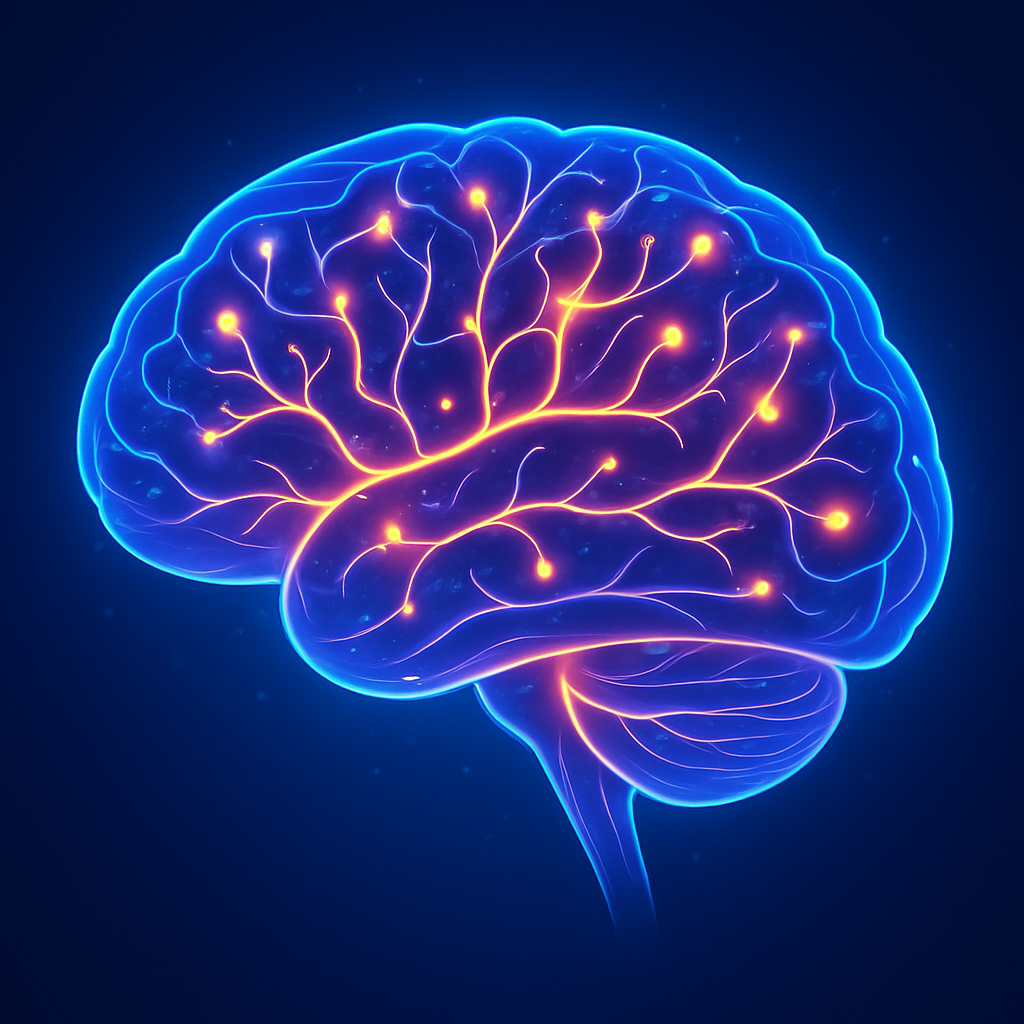
In this section, we’ll talk about the main brain chemicals and hormones that shape how you feel, think, and act every day. These are the levers behind your focus, mood, energy, stress, and sense of connection. Understanding them gives you tools to shift your state and improve your life.
Here are some of the key players we’ll cover:
-
Dopamine – motivation, drive, reward prediction.
-
Serotonin – mood, calm, contentment.
-
Oxytocin – bonding, trust, social connection.
-
Cortisol – stress, alertness, circadian rhythm.
-
Acetylcholine – focus, learning, memory.
-
GABA – relaxation, calm, stress regulation.
-
Glutamate – learning, memory, excitatory drive.
Neurochemistry is the study of the chemicals that make your brain and nervous system work. These chemicals — called neurotransmitters and neuromodulators — are how nerve cells (neurons) communicate with each other.
Every thought, emotion, memory, and action depends on these signals. For example, dopamine helps drive motivation and learning, serotonin helps regulate mood and sleep, and other neurotransmitters like acetylcholine, GABA, and glutamate support focus, calm, and memory.
You can think of neurochemistry as the brain’s language of chemicals. When this chemical balance is healthy, you feel clear, motivated, and emotionally stable. When it’s disrupted, it can affect your mood, energy, and ability to think clearly.
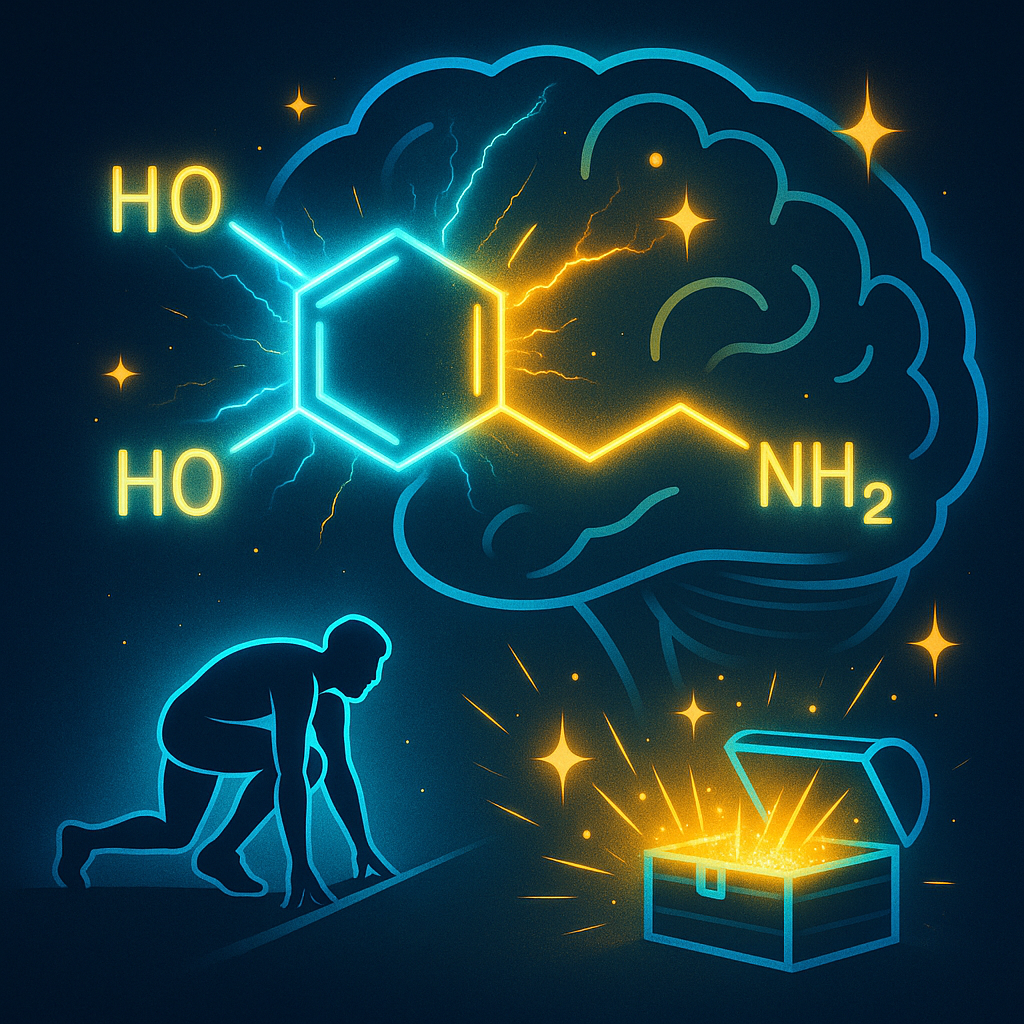
Dopamine
Anticipation & Motivation.
Dopamine is the “anticipation molecule.” It rises when your brain predicts a future reward — not just when you receive it. It fuels motivation, focus, and persistence.
-
You feel it as: motivation, excitement, drive to pursue goals.
-
How to build it: meaningful goals, novelty, anticipation, self-talk, visualization.
-
Food/nutrients: protein (tyrosine from meat, fish, eggs, beans, nuts).
-
Pathways: sunlight, exercise, small wins, delayed gratification.
Dopamine can be triggered from internal sources (like thoughts, self-talk, or visualisation) or external sources (things in the world around you).
Here are some examples of those external triggers:
- Food: Dopamine rises not only when you eat something delicious but even earlier, when you anticipate the reward. For example, smelling pizza baking in the oven or thinking about your favorite dessert starts the dopamine system firing. This is your brain preparing you to go after that meal.
- Social validation: Human beings are wired to connect. Dopamine is released when we anticipate or receive recognition from others. This could be as simple as hearing, “You look great today,” or “Well done on that project.” In today’s world, social media also taps into this system — posting a photo and waiting for likes and comments can cause dopamine to spike in anticipation of that validation.
- Money: Dopamine doesn’t just respond to spending or receiving money; it responds strongly to the possibility of gaining money.
That’s why buying a lottery ticket or taking a step toward a financial goal can trigger dopamine. Your brain is tracking the chance of a future reward. Even working toward a paycheck, investment, or business success over time involves dopamine guiding your effort.
The key is that dopamine is about prediction of reward, not just the reward itself. If your brain expects something good, dopamine rises to motivate you. If your brain predicts no reward, dopamine drops, and motivation fades. This is why setting meaningful goals, building anticipation, and creating purpose in daily life are so powerful: they prime your dopamine system to fuel energy, focus, and persistence.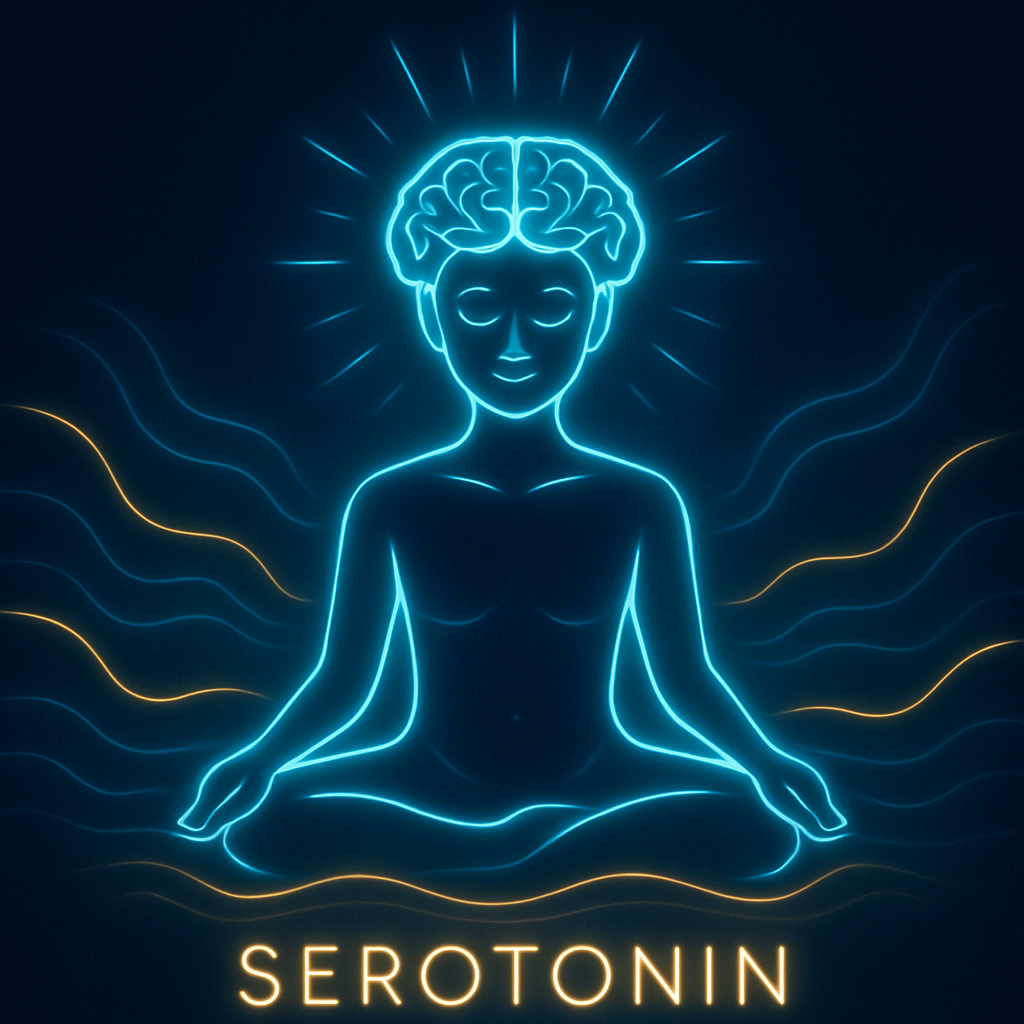
Serotonin
Mood & Balance
Serotonin is the “mood stabilizer.” It helps regulate calm, contentment, and emotional balance.
-
You feel it as: peace, well-being, patience, stable mood.
-
How to build it: morning sunlight (direct to eyes, no sunglasses/windows), gratitude, steady routines.
-
Food/nutrients: tryptophan (eggs, salmon, turkey, nuts, seeds).
-
Pathways: sunlight exposure sets circadian rhythm → serotonin in day → melatonin at night for sleep.
Serotonin levels are influenced by many factors, and you can support them through daily habits. Here are some key examples:
- Sunlight: Getting exposure to natural light, especially within the first 30–60 minutes after waking, helps boost serotonin and set your circadian rhythm. It’s not about watching the sunrise exactly — it’s about letting your eyes receive the natural brightness of the morning (without sunglasses or windows between you and the light). This light tells your brain, “it’s daytime,” which stabilizes your body clock, improves mood, and later helps you sleep better at night. Even on cloudy mornings, the outdoor light is far more powerful for your brain than indoor lighting.
- Movement: Physical activity, especially rhythmic activities like walking, running, or cycling, helps raise serotonin. This is one reason exercise is consistently shown to improve mood and reduce anxiety and depression.
- Nutrition: The body makes serotonin from an amino acid called tryptophan, which comes from food. Foods like eggs, salmon, nuts, and seeds provide the building blocks. Pairing these foods with healthy carbohydrates helps the brain absorb and use tryptophan more effectively.
- Connection and Gratitude: Positive social interactions, feelings of belonging, and practicing gratitude all raise serotonin. This is part of why close relationships and community are so important for emotional well-being.
The key idea is that serotonin supports mood stability and long-term well-being. By building simple daily habits — morning sunlight, movement, nourishing foods, and meaningful connection — you naturally support serotonin, which helps you feel calmer, more balanced, and better able to enjoy life.

Oxytocin
Connection & Trust
Oxytocin is the “bonding molecule.” It supports connection, trust, and social bonding.
-
You feel it as: warmth, closeness, love, trust.
-
How to build it: physical touch, positive social interactions, acts of kindness.
-
Food/nutrients: no direct food source, but balanced nutrition supports oxytocin release.
-
Pathways: eye contact, touch, safe social connection.
Oxytocin can be triggered by both internal states (such as feelings of love, gratitude, or compassion) and external experiences (like physical touch, supportive relationships, or shared positive experiences).
In today’s world, oxytocin isn’t limited to face-to-face contact. Sending a heartfelt message, receiving genuine support online, or being part of a positive digital community can also spark oxytocin release. Your brain interprets these moments of connection — whether in person or virtual — as signals of trust and belonging.
What makes oxytocin powerful is its effect on how the brain and body work together: it reduces stress hormones like cortisol, promotes feelings of calm and safety, and deepens trust in relationships. In this way, oxytocin supports both emotional well-being and physical health, showing that human connection isn’t just “nice to have” — it’s biology.

Cortisol
Cortisol is the “stress and alertness” hormone. It’s not just about stress — you need healthy morning spikes of cortisol to wake up your brain and regulate sleep cycles.
-
You feel it as: energy in the morning, stress under pressure.
-
How to balance it: morning sunlight + movement (boosts), meditation & recovery (reduce).
-
Food/nutrients: stable blood sugar helps regulate cortisol (avoid huge glucose spikes).
-
Pathways: circadian rhythm — morning spikes are healthy; chronic elevation = damaging.

Acetylcholine
Acetylcholine is the “focus molecule.” It’s critical for learning, memory, and sustained attention.
-
You feel it as: deep concentration, ability to absorb new skills.
-
How to build it: deliberate practice, learning new skills.
-
Food/nutrients: choline (eggs, fish, broccoli).
-
Pathways: sleep, exercise, supplements (e.g., Alpha-GPC, but food first).

GABA
GABA is the brain’s main calming chemical. It slows activity and creates relaxation.
-
You feel it as: calm, reduced anxiety, readiness for sleep.
-
How to build it: meditation, slow breathing, mindfulness.
-
Food/nutrients: fermented foods, green tea, magnesium-rich foods.
-
Pathways: sleep hygiene, relaxation practices, stress reduction.

Glutamate
Glutamate is the brain’s main excitatory chemical, crucial for learning and memory.
-
You feel it as: mental sharpness, learning, memory formation.
-
How to balance it: stimulation + rest (too much glutamate = over-excitation).
-
Food/nutrients: protein sources (amino acids).
-
Pathways: neuroplasticity, learning, novelty.
Music to touch your heart
When we quiet the mind, the heart steps forward. Let this be the moment you choose to feel.
Remember — Omkara
A soft invocation from soul to soul.
This track carries the stillness between lifetimes — the echo of who you were before the noise. Let it guide you not to think, but to feel. Not to strive, but to remember.
Inspired Reading
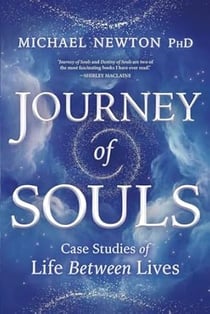
(1994) Journey of Souls
Dr Michael Newton
Based on 29 case studies under deep hypnosis, Newton uncovers detailed maps of the afterlife: soul councils, life reviews, reincarnation planning, and the journey between lives.
His work introduced many to the structured and loving intelligence of the spirit world, affirming the continuity and growth of the soul beyond each lifetime.

(1993) Between Death and Life
Dolores Cannon
Cannon, a pioneer in quantum hypnosis, gathers decades of client experiences to map the soul’s journey after death.
Her case studies paint a vibrant picture of the afterlife, the planning of lives, soul groups, and karmic lessons.
The tone is loving, clear, and deeply reassuring — a kind grandmother's voice explaining cosmic truth.
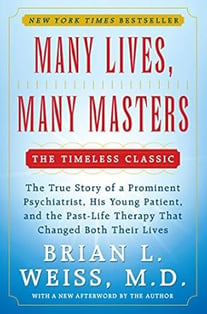
(1998) Many Lives, Many Masters
Dr. Brian Weiss
A traditionally trained psychiatrist, Weiss was transformed when a patient under hypnosis began recounting past lives and relaying messages from spiritual guides.
This bestselling book opened the mainstream to the therapeutic power of past life regression and the soul’s journey across incarnations.

(1894) The Astral Plane
Charles W. Leadbeater
An early theosophist, Leadbeater described non-physical realms with precision — from thought forms to the mechanics of reincarnation.
This book explores the multidimensional nature of human consciousness and offers an early framework for understanding out-of-body states and the soul’s continuity beyond the physical.
* If you choose to explore a service I’ve shared — like a book or audiobook through amazon — I may receive a small commission, at no extra cost to you. That exchange helps support this site and allows me to continue sharing grounded, trustworthy tools and insights.
It’s a quiet way of saying thank you — and I’m deeply grateful.
